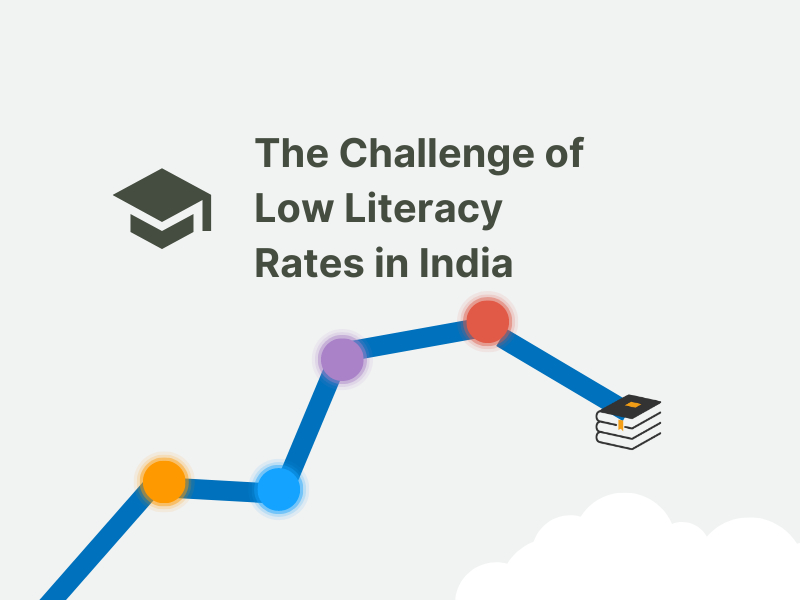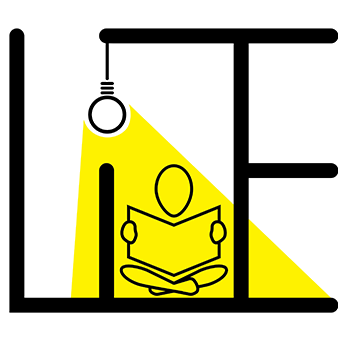Literacy, the ability to read and write, is the bedrock of personal development and societal progress. It is a fundamental skill that empowers individuals to access information, engage with society, and enhance their opportunities, which is the essence of personal development and societal progress. In a country as diverse and dynamic as India, the challenge of low literacy rates persists, reflecting the complexity of addressing educational disparities across various regions and communities. Despite significant advancements in technology, infrastructure, and economic growth, a substantial portion of the population still lacks basic literacy skills, hindering their full participation in the nation’s growth story. This article delves into the multifaceted landscape of literacy in India, uncovering the underlying factors contributing to low literacy rates, the impact of gender disparities, and the efforts undertaken to promote education and literacy for all. By spotlighting this critical issue, we aim to ignite awareness and collective action, fostering an inclusive society where every citizen can unlock their potential through education and literacy.
Understanding Literacy in India
In India, literacy holds the key to unlocking a brighter future for millions. It is a pivotal element in shaping an individual’s life, influencing their access to opportunities, and contributing to their overall well-being. Literacy extends beyond the essential ability to read and write. It empowers individuals to navigate the complexities of the modern world, make informed decisions, and actively participate in societal growth. Yet, the challenge of low literacy rates remains a significant hurdle in India’s quest for progress. Despite commendable efforts in advancing educational infrastructure and initiatives, a substantial portion of the population still lacks basic literacy skills. This disparity hampers social mobility, economic empowerment, and the realization of individual potential. To truly propel India forward, addressing the issue of literacy becomes imperative, requiring comprehensive measures that empower all citizens with the transformative gift of knowledge and education.
Current Literacy Rate Updates
India’s literacy rate has witnessed notable advancement, reflecting the nation’s commitment to education and empowerment. According to the current records, the overall literacy rate stands at approximately 77.7%, a significant improvement from previous years. This progress is a testament to the efforts made by the government, NGOs, and various stakeholders to promote education and enhance literacy skills across the country. However, while the upward trend is promising, the persistent disparity between urban and rural literacy rates demands focused attention. Rural areas continue to grapple with lower literacy rates, hindering social and economic development in those regions. Addressing this disparity necessitates targeted initiatives, including increased investment in rural education, improving access to quality educational resources, and addressing socio-economic barriers that impede educational opportunities. By directing concerted efforts towards narrowing this gap, India can pave the way for a more inclusive and educated society that empowers all citizens to thrive and contribute to the nation’s growth.
Factors Contributing to Low Literacy Rates
The low literacy rates in India can be attributed to a complex interplay of socio-economic factors. Economic disparities remain a formidable obstacle, with impoverished communities struggling to afford quality education. Limited access to schools and educational resources, especially in remote and rural areas, poses another hurdle for many aspiring learners. Additionally, inadequate infrastructure, such as a lack of proper school facilities and qualified teachers, affects the quality of education provided. Gender-based discrimination also contributes to low literacy rates, particularly for girls and women, who often face societal pressures and restrictions on pursuing education. Early marriages and child labour practices divert children from educational paths, perpetuating the cycle of illiteracy. To combat these challenges, comprehensive efforts are required, ranging from policies that prioritize education and inclusivity to community-driven initiatives that break down cultural barriers and promote the value of learning for all. Only through collaborative action can India address these factors and elevate its literacy rates, empowering its citizens with the gift of knowledge and fostering a more equitable and progressive society.
Literacy Activities and Initiatives
To tackle the challenge of low literacy rates, India has witnessed a surge in literacy activities and initiatives aimed at uplifting communities and transforming lives. Governmental efforts, such as the Sarva Shiksha Abhiyan and the National Literacy Mission, have been instrumental in expanding access to education and promoting functional literacy among all age groups. Non-governmental organizations (NGOs) have also played a crucial role, partnering with local communities to implement grassroots programs that address specific literacy needs. These initiatives encompass a wide array of activities, including setting up literacy centres, organizing literacy camps, and providing innovative teaching methods. Moreover, the focus on female literacy has gained prominence, with targeted programs to break gender-based barriers and ensure equitable educational opportunities for girls and women. Vocational training initiatives have been introduced to enhance employability, empowering individuals with relevant skills for sustainable livelihoods. Through these diverse efforts, India is paving the way for a brighter future, where literacy acts as a catalyst for social development and inclusive growth.
Promoting Female Literacy
Promoting female literacy is a vital step towards creating a more equitable and progressive society in India. Historically, women have faced significant barriers to accessing education, perpetuating a cycle of illiteracy and limiting their opportunities for personal growth and development. However, with a growing recognition of the transformative power of education for women, various initiatives have been launched to empower girls and women through education. The Beti Bachao Beti Padhao campaign, launched by the Indian government, seeks to address the issue of declining child-sex ratios and promote education for girls. Scholarships and financial incentives are provided to girls to encourage their enrollment and retention in schools. Additionally, NGOs and community-based organizations have been instrumental in setting up literacy centres and conducting awareness drives to emphasize the importance of female education. By promoting female literacy, India not only strengthens the position of women in society but also lays the foundation for a more inclusive and prosperous future.
Digital Literacy and Technological Advancements
In the digital age, digital literacy has emerged as a critical skill in India. With rapid technological advancements, access to digital resources, and the increasing penetration of the internet, digital literacy has become as important as traditional literacy. Digital literacy encompasses the ability to use digital devices, navigate the internet, and critically evaluate information online. Recognizing its significance, various initiatives have been introduced to promote digital literacy across the country. E-learning platforms and online educational resources have emerged as powerful tools to provide accessible and flexible learning opportunities to students, even in remote areas. These digital initiatives bridge geographical barriers and democratize education, making learning resources available to a wider audience. By fostering digital literacy and embracing technological advancements, India can equip its citizens with the skills needed to thrive in the digital era and contribute to the nation’s progress.
The Way Forward: Striving for Universal Literacy
As India continues its journey towards progress and development, achieving universal literacy must be a top priority. The way forward involves a multi-faceted approach that addresses the root causes of low literacy rates and empowers individuals with knowledge and skills. Investment in education infrastructure, such as schools and libraries, is essential to provide access to quality education for all. Equally important is the implementation of teacher training programs that equip educators with the tools and strategies to cater to diverse learning needs. Promoting inclusive learning environments, where every learner feels valued and supported, fosters a sense of belonging and encourages active participation in education. Additionally, targeted efforts to engage communities and address socioeconomic barriers can create an enabling environment for learning. Embracing digital innovations and leveraging technology can further enhance educational opportunities and overcome geographical constraints. By collectively striving towards universal literacy, India can unlock the potential of its citizens and build a more inclusive and prosperous nation.
Conclusion
In conclusion, addressing the issue of low literacy rates in India is a crucial step towards creating a more equitable and thriving society. Literacy forms the bedrock of progress and development, enabling individuals to lead empowered and fulfilling lives. By recognizing the challenges that contribute to low literacy rates and implementing comprehensive initiatives, India can bridge the literacy gap and unlock the immense potential of its citizens. Through targeted efforts such as promoting female literacy, embracing digital innovations, and fostering inclusive learning environments, we can create a brighter future for generations to come. Universal literacy is not merely an aspiration but a collective responsibility that demands the commitment of policymakers, educators, communities, and individuals. By championing the cause of education and empowerment, India can pave the way for a more inclusive and prosperous nation where every individual has the opportunity to thrive and contribute meaningfully to society. Together, let us embark on this transformative journey towards a more literate and enlightened India.

